

2015 History Essay Prize Competition. 400 years of fashion. An invention to dye for: the colour purple - Science - News - The Independent. From the earliest cultures to the present day, people have sought to harness the visual power of purple to mark themselves out as different, better than those around them.

From bishops to kings, pop stars to fashion models, its wearing has been a calculated act of showing off. In life as in language too. Witness a "purple patch" for a fruitful or creative period, or in writing when too highly florid a style can be damned as "purple prose". In ancient Rome the termporphyrogenitus or "born to the purple" indicated a dynastic emperor, not someone who had taken the position through mere military force.
But times have changed. How the colour red warps the mind. Red is perhaps the most manipulative colour, influencing everything from your behaviour in the workplace to your love life.
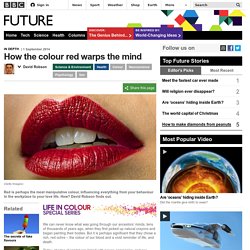
How? David Robson finds out. We can never know what was going through our ancestors’ minds, tens of thousands of years ago, when they first picked up natural crayons and began painting their bodies. But it is perhaps significant that they chose a rich, red ochre – the colour of our blood and a vivid reminder of life, and death. Women’s Hairstyles & Cosmetics of the 18th Century: France & England, 1750-1790 — Démodé. Just as fashions change, so too do styles in hairstyles and cosmetics.

The second half of the 18th century is an era particularly identified with hair and makeup, as these became such potent symbols of aristocracy during the Enlightenment and French Revolution. France and (to a lesser degree) England were the fashion leaders of this era, and it is to these countries that this article looks to identify the changing trends in hair and makeup. In addition to a review of secondary sources (published books and research articles) on the history of fashion in the 18th century, this article draws on paintings and fashion plates as primary sources to examine the fashionable look in beauty. From the Guardian. Towards the end of the great war, in June 1918, America's most authoritative women's magazine, the Ladies' Home Journal (it still exists), had a few wise words of advice for fretting mothers.

"There has been a great diversity of debate on the subject," it wrote, "but the generally accepted rule is pink for the boys, and blue for the girls. Girls Are Taught To 'Think Pink,' But That Wasn't Always So. Photographer JeongMee Yoon felt her daughter's life was being overtaken by pink.
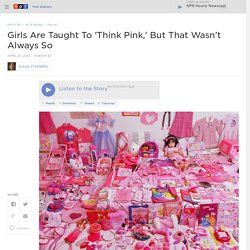
She illustrated that in her 2006 portrait Seo Woo and Her Pink Things. JeongMee Yoon/Museum of Fine Arts, Boston and Jenkins Johnson Gallery hide caption itoggle caption JeongMee Yoon/Museum of Fine Arts, Boston and Jenkins Johnson Gallery Men's suits weren't always so sober. This embroidered, pink silk coat was worn by a Frenchman in the court of Louis XVI in the 18th century. Itoggle caption Susan Stamberg/NPR Men's suits weren't always so sober. Susan Stamberg/NPR. How the colour pink lost its masculinity. Details Published: 16 January 2010 Hits: 18398 From Barbie dolls to princesses, pink has become a symbol for femininity and all things girly.
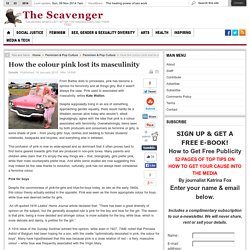
But it wasn't always the case. Pink used to associated with masculinity, writes Kate Walton. Despite supposedly living in an era of something approaching gender equality, there would hardly be a Western woman alive today who wouldn’t, albeit begrudgingly, agree with the idea that pink is a colour associated with femininity. This profusion of pink is now so wide-spread and so dominant that it often proves hard to find items geared towards girls that are produced in non-pink tones. Pink for boys Despite the commonness of pink-for-girls and blue-for-boys today, as late as the early 1940s, this colour theory actually existed in the opposite. How to think like Sherlock Holmes: See and observe to fight attention blindness; be happier.
Illustration by Rob Donnelly.
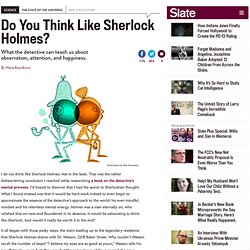
I do not think like Sherlock Holmes. Not in the least. That was the rather disheartening conclusion I reached while researching a book on the detective’s mental prowess. The National Digital Public Library Is Launched! by Robert Darnton. Notes on "Ways to Originality" The Color of Fashion. Meaning and History of the Color Red, from Religion to Fashion. - Swide. Red is one of the first colours to be used by humans as art or body painting.
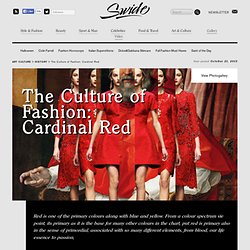
In an archaeological site in South Africa, Pinnacle Point, ochre coloured iron oxide drawings were discovered dating back to between 170,000 to 40,00 years ago. More intense red, later called vermillion was made in the Neolithic period by drying and krusging tiny insects called Kermes Vermilio by the Romans, hence vermillion red. Red was not only used in the Western world in the prehistoric period, but also in the East. In Ancient Chin, artisans painted pottery in red and black in the Yangshao Culture in (5000-3000 BC). Vintage Fashion Guild : Fashion History : Fabric Dye: Dyeing To Be Fashionable. Remember the 90s when everyone wore black until a darker shade came along?
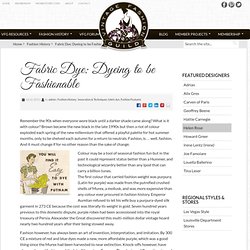
What is it with colour? Brown became the new black in the late 1990s but then a riot of colour exploded each spring of the new millennium that offered a playful palette for hot summer months, only to be shelved each autumn for a return to neutrals. Fashion, is… well, fashion. And it must change if for no other reason than the sake of change. Colour may be a tool of seasonal fashion fun but in the past it could represent status better than a Hummer, and technological wizardry better than any Ipod that can carry a billion tunes.
Citebite - Link directly to specific quotes in web pages. Harvard_quick_guide_tcm44-47797. How Fashion Became a Top Draw at Museums. When Diana Vreeland was running The Costume Institute at the Metropolitan Museum of Art in the ’70s, she never doubted that people would line up to see clothing.
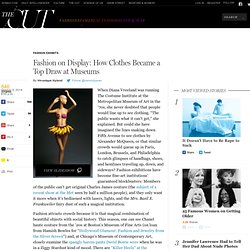
“The public wants what it can’t get,” she explained. But could she have imagined the lines snaking down Fifth Avenue to see clothes by Alexander McQueen, or that similar crowds would queue up in Paris, London, Brussels, and Philadelphia to catch glimpses of handbags, shoes, and hemlines traveling up, down, and sideways? Fashion History 1900 1949.